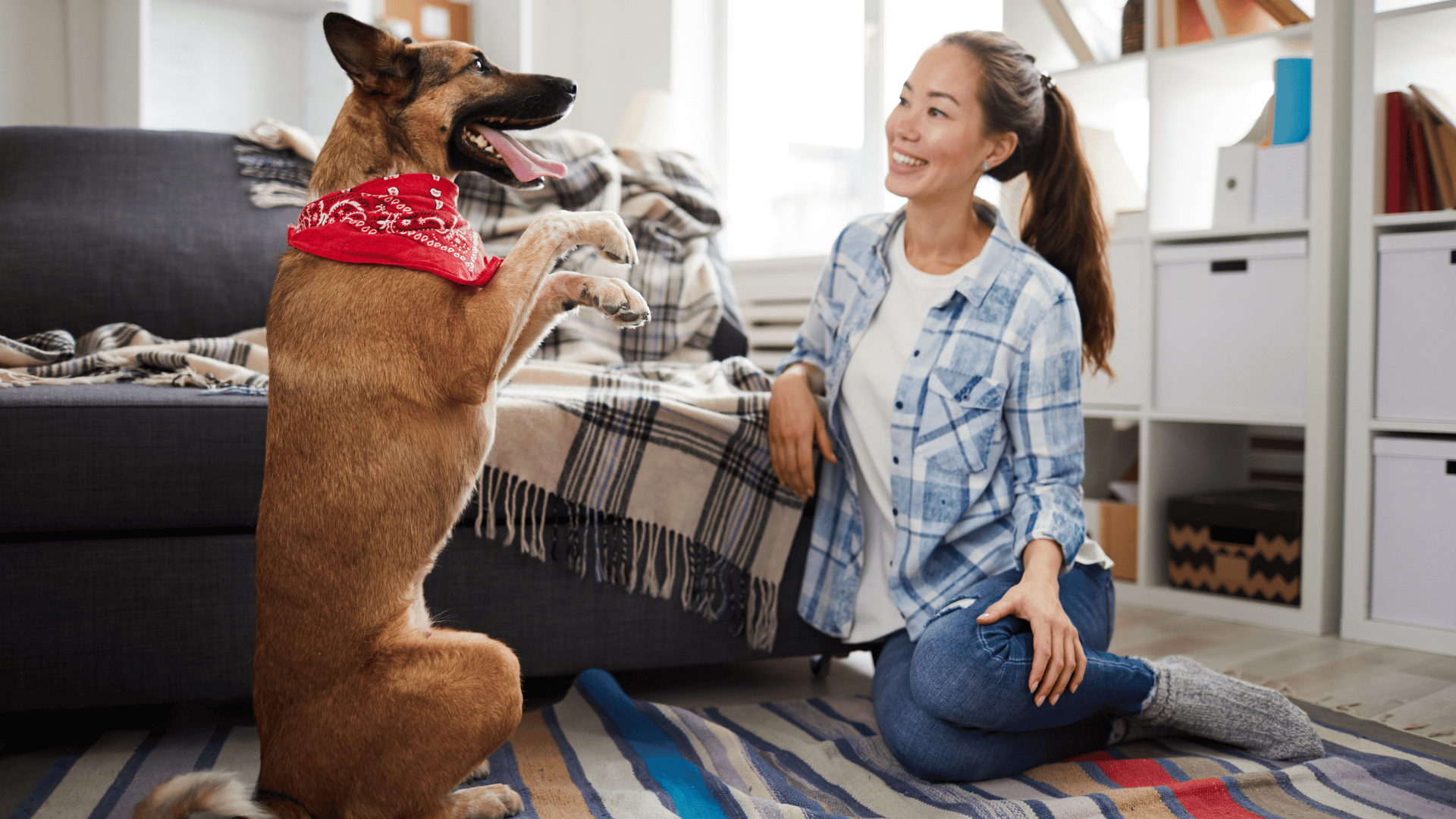Having a pet comes with great responsibility. One of the things that every pet owner knows they should do is train their dog. Regretfully, especially if this is your first dog, it can be challenging to know where to begin with training your furry friend.
However, there are a lot of other reasons why dog training is important, beyond just teaching your pet manners. In addition to keeping your pet safe while you're out and about and stimulating their mind, training fosters a lifelong bond between you and your dog.
A dog's training can begin at any age and is an integral part of dog ownership. Training increases self-assurance, stimulates the mind, and fortifies the link between people and animals. Dogs never stop learning. You can have dog training classes or hire a professional dog trainer at any time.
Training sessions can help dogs with more timid or anxious personalities. It gives us a sense of accomplishment and gives us a channel of communication with our family members who are four-legged. By giving them positive attention, this deepens our relationship with our dogs. In addition, they get to spend time with us—something that most dogs desire—and feel connected to us.
The best part is that frequent training will benefit you as well as your dog! Keeping this in mind, let's look at these good reasons for training your dog.
Reasons why your dog needs training sessions
- Training teaches your dog how to behave. Dogs can perceive actions that seem wrong to us as absolutely correct. That's where obedience training comes into play. For your dog to understand exactly what they should and shouldn't do, training is a must. It teaches them to always be a courteous member of the family, avoid destructive behavior, and play nicely with other dogs and people. Stated differently, it imparts upon them the essential life skills required to become members of the community.
- Training your dog is essential for their safety and goes far beyond just teaching them manners. For a brief moment, picture yourself and your dog at your neighborhood dog park when someone leaves the gate open and your dog runs away. If your dog is not trained, your pleadings for him to return will go unanswered. However, if your dog has learned to come when called, you can count on them to pull over and join you. With dog training, you can be sure that your dog will be safe in the event of a dangerous situation.
- The world can appear to your dog to be a perplexing, frightening, and occasionally unsettling place. There are surprises, odd sights and sounds, and circumstances that seem unpredictably unpredictable around every corner. In the meantime, insane people are counting on them to sit here, remain there, and not touch that. However, if you train your dog to exhibit the behavior you desire, they won't react fearfully or anxiously to unfamiliar or unexpected situations. Rather, they will reply with calm assurance.
Steps on how to train your dog
Do you want to get a dog and are curious about dog training? Learn about the steps involved in dog training here:
- Show your command.
It's important to be clear with your dog when you first begin training them. Dogs cannot understand human language, so you must explain the meaning of the basic commands to them.
To get your dog to sit, for example, give it the command and then gently press its buttocks to the ground. When you give the order, you can also have someone else try to mimic the action. It facilitates the dog's positive reinforcement and quicker learning of the action.
2. Reward them with treats.
Treats are a useful tool for rewarding your puppy or adult dog for good behavior. Select goodies that your dog adores but cannot have every day. It encourages your dog to look forward to training.
Show your dog the treat when you give the command. It will motivate them to finish the instruction. Even though it might be difficult, you must resist giving in to your pet's puppy dog eyes and reward it with a treat before it obeys the command. Ensure that the way you distribute the treats is consistent. When giving your dogs treats on a daily basis, try to stick to the same kinds while mixing them up.
3. Teach your dog leash training.
"Heel" refers to the dog walking on your left side, head even with your knee, while you are holding the leash loosely. Training a puppy can be a little more laid-back; the idea is for them to walk nicely on a loose leash without pulling. Instead of saying "heel," some trainers would rather say "let's go" or "forward."
Use the same word consistently, no matter what cue you decide on. It is entirely up to you whether your puppy walks on your left or right side. However, maintain consistency in where you want them to go to avoid confusion and teach them to zigzag ahead of you.
4. Get them excited.
Exciting noises and movements elicit a positive response from dogs, particularly in training. During your training sessions, try adding hand gestures and animated sounds, like clicker training. They could speed up your dog's learning.
You can also express your happiness to your dog once they have successfully understood and executed the command. Your dog can feel your love when you give them hugs, pats on the head, or expressions of appreciation. They will be eager to follow new instructions since these encouraging cues will help them comprehend the learning process.
5. Keep training sessions short.
Puppy owners are aware of how short their attention spans can be. Puppy training can be done in at least 10–15 minutes. Contrary to popular belief, even adult dogs have shorter attention spans. It can be discouraging to have your dog ignore you or only want to perform a few repetitions before moving on to something else, even though it can be exciting to start teaching them new tricks or skills.
Short training sessions will improve your dog's overall training and keep things enjoyable for both of you! This is crucial, in particular for young puppies, to make sure they enjoy their basic obedience training sessions with you. When you feel like your dog has completed the basic training, you might want to think about your furry pet in an advanced dog training.
Why do dogs make us happier?
For countless thousands of years, dogs have been man's best friend and partner. Dogs are devoted companions and are capable of unconditional love; this has been documented throughout human history.
In good times and bad, our dog friends are there for us no matter what. They are our solace when we are depressed and our companions when we are lonely. "Pet owners exhibited good self-esteem, were more physically fit, were less lonely, were more conscientious, were more socially outgoing, and had healthier relationship styles (i.e., they were less fearful and less preoccupied) than non-owners," according to a study published in the Journal of Personality and Social Psychology.
Dogs encourage us to walk outside and engage in more physical activity, which, over time, may improve our mental health. There is another way to look at it: dogs bring us happiness because they serve as the model for other positive behaviors in our lives. Maybe it's time for you to get a dog, don't you think?










